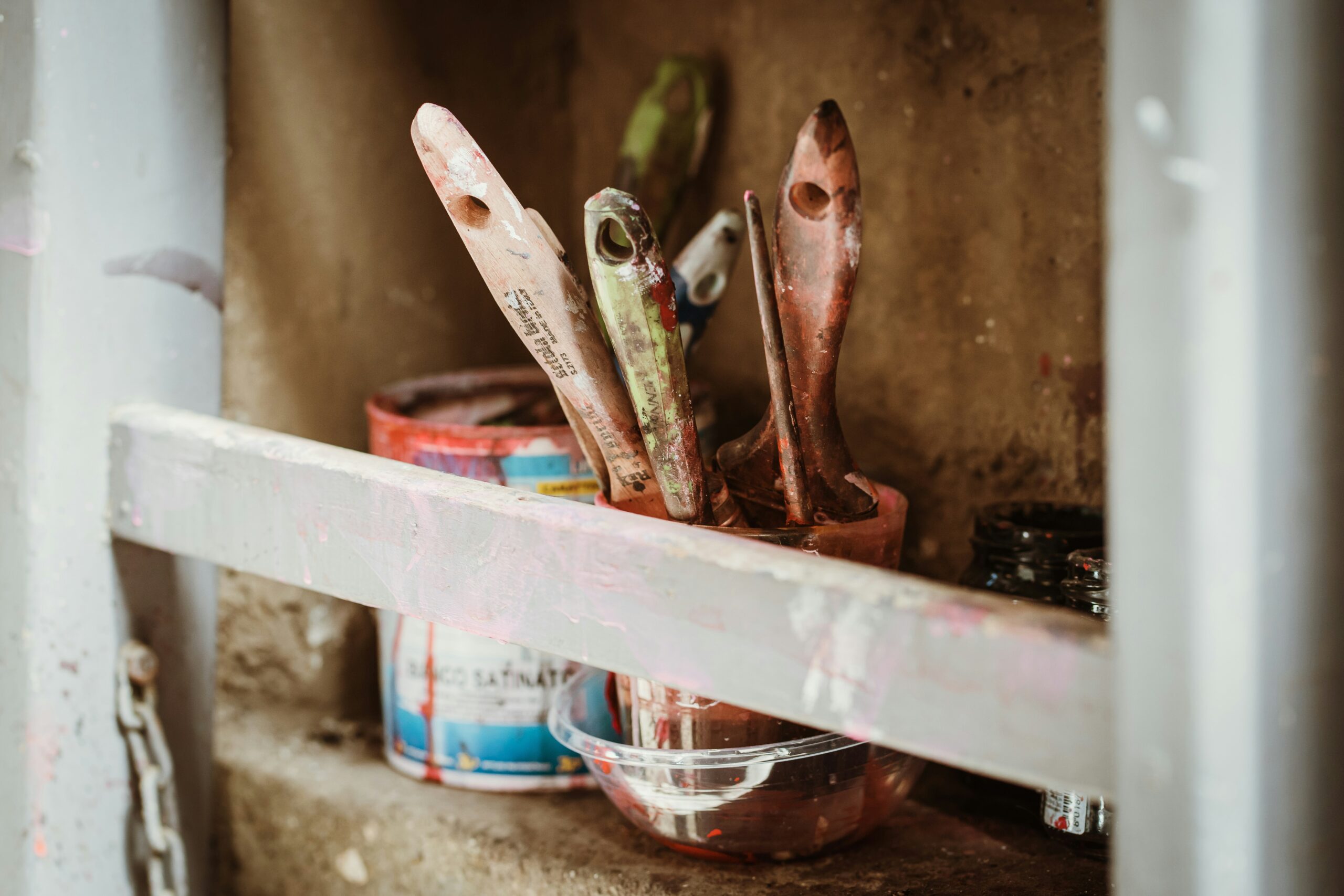Painting a room is one of the most cost-effective ways to refresh and personalize your living space. Whether you’re aiming for a subtle change with a neutral tone or a bold statement with vibrant colors, painting can transform the atmosphere of any room. This comprehensive guide will walk you through every step of the process, from planning and preparation to the final touches, ensuring a professional-looking finish.
Planning Your Painting Project
Choosing the Right Colors
Selecting the right colors for your room is crucial. The color you choose can influence the room’s mood, perceived size, and how it complements the existing decor. Here are some tips for choosing the perfect color:
- Consider the Room’s Purpose: Think about how the room is used. Calming colors like blues and greens are ideal for bedrooms and bathrooms, while vibrant colors like reds and yellows can energize kitchens and living rooms.
- Test Samples: Paint small sections of your wall with different colors to see how they look at different times of the day and under various lighting conditions.
- Use Color Theory: Understand basic color theory to create harmonious color schemes. Complementary colors (colors opposite each other on the color wheel) can make a room pop, while analogous colors (colors next to each other on the color wheel) create a more serene atmosphere.
- Consider Existing Elements: Take into account the color of your furniture, flooring, and other permanent fixtures. Ensure that your chosen paint color complements these elements.
Estimating Paint and Supplies
Before you start painting, you need to estimate the amount of paint and supplies you’ll need. This ensures you have everything on hand and can avoid multiple trips to the store.
- Measure the Room: Calculate the total square footage of the walls you plan to paint. Multiply the room’s length by its height to get the total wall area. Don’t forget to subtract the area for doors and windows.
- Determine Paint Quantity: Generally, one gallon of paint covers about 350 square feet. Depending on the color and the quality of the paint, you may need more than one coat. Factor this into your calculations.
- Gather Supplies: In addition to paint, you’ll need painter’s tape, drop cloths, paint rollers, brushes, a paint tray, sandpaper, a putty knife, and primer. Ensure you have enough of each item to complete the job without interruptions.
Choosing the Right Finish
Paint finishes affect both the appearance and durability of the paint. Different finishes are suitable for different rooms and purposes:
- Flat/Matte: This finish has no shine and is excellent for hiding imperfections. It’s best for ceilings and low-traffic areas.
- Eggshell: With a slight sheen, eggshell finish is more durable than flat and is good for living rooms and bedrooms.
- Satin: Satin finish has a soft sheen and is easy to clean, making it ideal for high-traffic areas like hallways and kitchens.
- Semi-Gloss: This finish is shiny and highly durable, perfect for bathrooms, kitchens, and trim.
- Gloss: The shiniest and most durable finish, gloss is often used for doors, cabinets, and trim.
Preparation
Clearing and Protecting the Room
Proper preparation is key to achieving a professional-looking paint job. Begin by clearing the room of all furniture and decorations. If you can’t remove large pieces of furniture, move them to the center of the room and cover them with drop cloths.
- Remove Fixtures: Take down any wall-mounted fixtures, such as pictures, shelves, and light switch covers. This makes it easier to paint the walls evenly and avoids any accidental paint splatters.
- Protect Surfaces: Use painter’s tape to mask off trim, baseboards, windows, and door frames. Lay down drop cloths to protect the floor from paint drips and spills.
Repairing Walls
Before painting, it’s essential to repair any imperfections in the walls. This includes filling holes, cracks, and smoothing rough patches.
- Fill Holes and Cracks: Use a putty knife to apply spackling compound to holes and cracks. Once it dries, sand the area smooth with fine-grit sandpaper.
- Sand Rough Areas: Sand any rough or glossy areas to create a smooth surface for the paint to adhere to.
- Clean the Walls: Wipe down the walls with a damp cloth to remove dust and debris. Clean greasy or dirty spots with a mild detergent and water. Allow the walls to dry completely before painting.
Priming the Walls
Priming is a crucial step, especially if you’re painting over a dark color, dealing with stains, or painting new drywall.
- Choose the Right Primer: Select a primer suitable for your wall type and the paint color you’re using. For example, use a stain-blocking primer for walls with stains or a tinted primer if you’re painting a light color over a dark one.
- Apply the Primer: Use a roller to apply the primer evenly across the walls. Cut in around the edges and corners with a brush. Allow the primer to dry completely before proceeding to the next step.
Painting
Cutting In
Cutting in is the process of painting the edges and corners of the walls with a brush before using a roller. This ensures a clean, professional finish.
- Load the Brush: Dip your brush about one-third of the way into the paint, and tap off the excess. Avoid overloading the brush to prevent drips.
- Paint the Edges: Carefully paint along the edges where the wall meets the ceiling, baseboards, and corners. Use smooth, even strokes to create a clean line.
Rolling the Walls
Once you’ve cut in around the edges, it’s time to use a roller to paint the larger wall surfaces.
- Load the Roller: Pour the paint into a paint tray and load the roller by rolling it in the paint until it’s evenly covered. Remove excess paint by rolling the roller on the tray’s ridged area.
- Apply the Paint: Start painting in a “W” or “M” pattern to distribute the paint evenly. Then, fill in the gaps with vertical strokes, working in small sections to maintain a wet edge and avoid lap marks.
- Blend and Smooth: After covering a section, lightly go over it with the roller in long, vertical strokes to smooth out the paint and blend any lines.
Applying a Second Coat
In most cases, a second coat of paint is necessary to achieve full coverage and a uniform finish. Allow the first coat to dry according to the manufacturer’s instructions before applying the second coat.
- Repeat the Process: Follow the same steps for cutting in and rolling the second coat as you did with the first coat. Ensure even coverage and a smooth finish.
Painting Trim and Doors
After the walls are dry, you can paint the trim and doors for a polished look.
- Tape the Edges: Use painter’s tape to mask off the walls and floors along the trim and door edges.
- Use a Brush: Use a high-quality brush to paint the trim and doors. Apply the paint in long, smooth strokes, and be mindful of drips and brush marks.
- Multiple Coats: Trim and doors may require multiple coats for full coverage. Allow each coat to dry completely before applying the next.
Finishing Touches
Removing Tape and Clean-Up
Once the paint is dry, it’s time to remove the painter’s tape and clean up your workspace.
- Remove Tape: Carefully remove the painter’s tape at a 45-degree angle to avoid peeling off any paint. If the tape is stuck, use a utility knife to cut along the edge before removing it.
- Clean Brushes and Rollers: Clean your brushes and rollers with the appropriate solvent (water for latex paint, mineral spirits for oil-based paint). Rinse them thoroughly and let them dry before storing.
- Dispose of Materials: Properly dispose of any paint cans, rags, and other materials according to local regulations.
Reassembling the Room
After the paint is completely dry, you can reassemble the room.
- Replace Fixtures: Reattach any wall-mounted fixtures, such as pictures, shelves, and light switch covers.
- Move Furniture Back: Carefully move furniture back into the room, taking care not to scratch or damage the freshly painted walls.
- Final Touches: Touch up any areas that may have been missed or need a little extra attention. Step back and admire your work!
Maintaining Your Painted Room
Regular Cleaning
To keep your painted walls looking fresh, clean them regularly.
- Dust and Wipe Down: Dust the walls periodically with a soft cloth or duster. For deeper cleaning, use a mild detergent and water to wipe down the walls, especially in high-traffic areas.
- Spot Cleaning: Address stains and spots promptly by gently scrubbing with a damp cloth and a mild cleaner. Avoid using abrasive materials that could damage the paint.
Touch-Ups
Over time, your painted walls may develop scuffs, chips, or other imperfections. Touch up these areas to maintain a flawless finish.
- Keep Extra Paint: Save a small amount of the original paint for touch-ups. Store it in a cool, dry place and label it for easy identification.
- Feather the Edges: When touching up, use a small brush to apply paint to the damaged area. Feather the edges to blend the new paint with the existing finish seamlessly.
Repainting
Eventually, you’ll need to repaint the room to keep it looking its best.
- Frequency: Depending on the room’s usage and wear, repainting may be needed every 5-10 years.
- Refresh the Look: Take the opportunity to refresh the look of your room by experimenting with new colors and finishes.
Troubleshooting Common Painting Issues
Drips and Sags
Drips and sags can occur if the paint is applied too thickly or if the surface is not properly prepared.
- Prevention: Apply paint in thin, even coats and avoid overloading the brush or roller.
- Fixing: If drips or sags occur, wait for the paint to dry, then sand the area smooth and apply a new coat.
Lap Marks
Lap marks happen when the paint dries too quickly, leaving visible lines where one section overlaps another.
- Prevention: Work in small sections and maintain a wet edge. Use a roller cover with the appropriate nap for the surface.
- Fixing: Apply another coat of paint, ensuring even coverage and blending the edges.
Blistering
Blistering occurs when the paint lifts from the surface, forming bubbles.
- Prevention: Ensure the surface is clean, dry, and free of moisture before painting. Avoid painting in direct sunlight or high humidity.
- Fixing: Scrape off the blisters, sand the area smooth, and repaint with a primer and topcoat.
Peeling
Peeling paint can result from poor adhesion, often due to inadequate surface preparation or moisture issues.
- Prevention: Properly clean and prime the surface before painting. Use high-quality paint and follow the manufacturer’s instructions.
- Fixing: Remove the peeling paint, sand the area, and apply a primer and topcoat.
Conclusion
Painting a room can be a rewarding project that transforms your living space. By following the steps outlined in this guide, from planning and preparation to the final touches, you can achieve a professional-looking finish that enhances the beauty and functionality of your home.
Whether you’re a seasoned DIY enthusiast or a beginner, these tips and techniques will help you paint with confidence and create a room that reflects your personal style.



